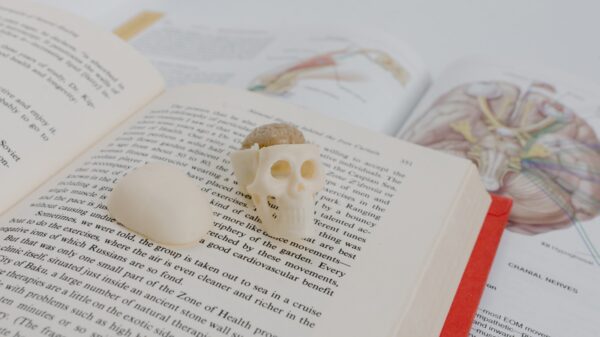Identifying the Source of the Odor
Examining the Interior of Your Car for Odor Sources
To effectively eliminate odors from your car, it is essential to first identify the source of the smell. This process starts with a thorough examination of the interior of your vehicle, focusing on areas that are commonly prone to odor accumulation. Begin by checking the floor mats, seats, and carpets for any signs of spills, stains, or food debris that may be the cause of the unpleasant smell. Pay close attention to hidden or hard-to-reach areas, such as under the seats or in the trunk, as these places are often neglected but can harbor odor-causing substances.
Another crucial step in identifying the source of the odor is inspecting the air vents and air conditioning system. Over time, mold, mildew, and bacteria can accumulate in these areas, resulting in foul smells being emitted when the ventilation system is activated. Therefore, it is advisable to remove the cabin air filter and examine it for any signs of dirt, debris, or mold growth. Cleaning or replacing the filter regularly can help prevent odor buildup and ensure fresh air circulation within your car.
Additionally, check the various compartments and storage spaces within your car, such as the glove box, center console, and door pockets. These areas often accumulate miscellaneous items, such as old receipts, wrappers, or forgotten food, which can contribute to an unpleasant odor. Remove any trash or clutter and thoroughly clean these compartments using mild detergent and water to eliminate any lingering smells.
Inspecting the Exterior of Your Car for Odor Sources
While the interior is the primary area where odors develop, the exterior of your car can also be a potential source. It is important to visually inspect the exterior for any signs of contamination or substances that may be causing the smell. Check the tires for signs of rubber degradation or trapped road debris, as these factors can emit unpleasant odors, especially in hot weather conditions. Additionally, look for any fluid leaks, such as oil or coolant, as these can produce distinct smells and may indicate a mechanical issue that requires attention.
Another external component to inspect is the car’s exhaust system. A malfunctioning catalytic converter or exhaust pipe can emit noxious odors, which are often described as a “rotten egg” smell. If you suspect an issue with your exhaust system, it is advisable to have it inspected and repaired by a professional mechanic.
Using Your Sense of Smell and Additional Techniques
Sometimes, identifying the source of an odor requires using your sense of smell to pinpoint the exact location. Spend some time inside your car, taking note of any specific areas where the odor seems to be more intense. This can help you narrow down the source and concentrate your efforts on eliminating the smell effectively.
In addition to relying on your sense of smell, you can use techniques like the “sniff test” to identify potential odor sources. This involves sniffing various surfaces and materials within your car, such as upholstery, carpets, or storage compartments, to determine if they emit a foul smell. By doing so, you can focus your cleaning efforts on the areas that are most likely causing the odor.
If the source of the smell remains elusive, there are other methods you can employ to aid in your search. One option is the use of an odor neutralizer or spray designed specifically for cars. These products can help reveal hidden odors by temporarily masking them and allowing you to locate the source more easily. Additionally, you may consider seeking the assistance of a professional detailer who specializes in odor removal. These experts have the necessary tools and experience to identify and eliminate even the most stubborn car odors.
Identifying the source of the odor is an essential step in effectively eliminating it from your car. By thoroughly examining the interior and exterior of your vehicle, using your sense of smell, and employing additional techniques if necessary, you can successfully pinpoint the cause of the unpleasant smell and take appropriate measures to eliminate it.
Cleaning and Vacuuming the Interior
Regular Cleaning
Regular cleaning of the interior of your car is essential to keep it odor-free. Start by removing any loose items such as trash, empty bottles, or food wrappers. These items can contribute to unpleasant smells and should be disposed of properly. Use a vacuum cleaner with various attachments to clean the carpets, seats, and floor mats thoroughly. Pay special attention to crevices and hard-to-reach areas where dirt and debris tend to accumulate. Be sure to remove and vacuum under the floor mats to eliminate any hidden odors.
Deep Cleaning
If your car has persistent odors, deep cleaning may be necessary to completely eliminate them. Start by removing any removable parts such as floor mats, seat covers, and cup holders. Shake out and vacuum these items separately. Next, mix a mild detergent or upholstery cleaner with warm water and use a soft brush or sponge to scrub the seats, carpets, and other surfaces. Be sure to follow the manufacturer’s instructions for any specific cleaning products you use. Rinse the cleaned areas thoroughly with clean water and allow them to dry completely before re-installing the removed parts.
For stubborn odors that have seeped into the upholstery, consider using a steam cleaner. Steam cleaning not only helps eliminate odors but also kills bacteria and allergens. Be cautious when using a steam cleaner to avoid saturating the upholstery excessively. Always test a small inconspicuous area before proceeding with steam cleaning the entire surface. Allow the interior to dry completely after steam cleaning, preferably with the windows open to aid in the ventilation process.
Removing Stains and Spills
Stains and spills can contribute to foul odors in your car. It’s important to address them promptly to prevent odors from becoming embedded in the upholstery. If you encounter a spill, blot it immediately with a clean cloth or paper towel to absorb as much liquid as possible. Avoid rubbing the spill, as this can push it deeper into the fabric. For liquid spills, you may also use a wet-dry vacuum cleaner to extract the moisture.
For stubborn stains, it may be necessary to use a specialized stain remover. There are several different products available that are specifically designed to tackle common stains such as coffee, ink, grease, or pet urine. Follow the instructions on the stain remover carefully and test it on an inconspicuous area before treating the entire stain. After applying the stain remover, blot the area gently with a clean cloth or sponge. Repeat the process if necessary until the stain is completely gone.
Addressing Lingering Odors
Even after thorough cleaning, some odors may linger in your car. Here are a few additional steps you can take to tackle these persistent smells:
1. Baking Soda: Place an open container of baking soda in your car overnight or sprinkle it on upholstery and carpets. Baking soda effectively absorbs odors and can help neutralize lingering smells.
2. Charcoal: Similar to baking soda, activated charcoal is great for absorbing odors. Place a few pieces of charcoal in an open container or tie them up in a porous bag and leave it in your car for a couple of days. Remember to remove it afterward.
3. Odor Eliminator Spray: There are numerous odor eliminator sprays available that can help neutralize unpleasant smells in your car. Choose a product designed specifically for automotive use and follow the instructions on the packaging to effectively eliminate odors.
4. Ventilation: Allow fresh air to circulate through your car by rolling down the windows or opening the sunroof while driving. This will help remove stale air and replace it with fresh air from outside, reducing any lingering odors.
Remember, regular cleaning and maintenance are key to preventing odors from building up in your car. By following these effective cleaning methods and using appropriate odor elimination techniques, you can keep your car smelling fresh and pleasant for your daily commute or road trips.
Using Natural Deodorizers
Using Natural Deodorizers
Natural deodorizers are a great option for eliminating odors from your car without relying on harsh chemicals or artificial fragrances. These alternatives are not only better for the environment but also safer for you and your passengers. Here are some effective natural deodorizers that you can use to keep your car smelling fresh and clean.
Baking Soda
Baking soda is a versatile and inexpensive natural deodorizer that can absorb unpleasant odors in your car. Sprinkling a generous amount of baking soda on the carpets and seats before vacuuming can help eliminate any lingering smells. Leave the baking soda for a few hours or overnight, then vacuum it up to remove the absorbed odors.
You can also create a homemade air freshener using baking soda. Fill a small container or fabric pouch with baking soda and place it under the seats or hang it from the rearview mirror. The baking soda will continuously absorb odors, keeping the air in your car fresher.
Activated Charcoal
Activated charcoal is another natural deodorizer known for its ability to eliminate odors. It works by absorbing moisture and trapping odor-causing particles in its porous structure. You can find activated charcoal in the form of briquettes or air purifying bags specifically designed for cars.
To use activated charcoal, simply place the briquettes or bags in different areas of your car, such as under the seats, in the door panels, or in the trunk. The charcoal will gradually absorb odors and keep your car smelling clean. Remember to replace the charcoal regularly, as it becomes less effective over time.
Coffee Grounds
Coffee grounds are not only useful for brewing a morning cup of joe but also for neutralizing odors in your car. Simply place a bowl or container filled with fresh coffee grounds in your car and leave it overnight. The coffee grounds will naturally absorb odors, leaving behind a subtle coffee scent.
Alternatively, you can place coffee grounds in a porous fabric bag and hang it from the rearview mirror or place it under the seats. This method allows the coffee scent to diffuse throughout the car while absorbing any unwanted odors.
Essential Oils
If you prefer a pleasant aroma in your car, essential oils can be a great natural deodorizer option. They not only mask unpleasant odors but also have their own odor-fighting properties. Lavender, lemon, peppermint, and tea tree oil are popular choices for eliminating odors and freshening up the air.
To use essential oils in your car, mix a few drops with water in a spray bottle and mist the interior surfaces. You can also add a few drops of your chosen essential oil onto a cotton ball or fabric and place it in cup holders or under the seats. Refresh the cotton balls or fabric every few days to maintain the desired fragrance.
It’s important to note that some essential oils can be strong, so it’s best to test them in small quantities and avoid using them if they cause any discomfort or irritation.
Using natural deodorizers can be an effective and eco-friendly way to eliminate odors from your car. Whether you choose baking soda, activated charcoal, coffee grounds, or essential oils, these alternatives can help keep your car smelling fresh without the use of harsh chemicals. Experiment with different options to find the one that works best for you and enjoy a pleasant and odor-free driving experience.
Eliminating Lingering Smells with Baking Soda
Removing Odors with Baking Soda
Baking soda, also known as sodium bicarbonate, is a versatile household ingredient that can effectively neutralize odors in your car. Its porous nature allows it to absorb and trap foul smells, leaving your vehicle smelling fresh and clean. Here are some effective ways to use baking soda to eliminate lingering odors from your car:
1. Sprinkling Baking Soda on Carpets and Upholstery
If you’re dealing with stubborn odors that seem to linger in your car’s carpets and upholstery, sprinkling baking soda can help eliminate them. Start by vacuuming the affected areas to remove any loose dirt or debris.
Next, generously sprinkle baking soda onto the carpets and upholstery, ensuring that you cover the entire surface area. Use a brush or your fingers to rub the baking soda into the fibers, allowing it to penetrate deep and absorb any trapped odor particles.
Let the baking soda sit for at least 30 minutes, or preferably overnight, to allow it enough time to work its magic. Finally, use a vacuum cleaner to thoroughly remove all the baking soda from the carpets and upholstery. You’ll be amazed at how fresh and odor-free your car will smell after this simple treatment.
2. Creating a Baking Soda Air Freshener
If you prefer a more subtle approach to eliminate odors, you can create your own baking soda air freshener. Take a small glass jar or container with a lid and fill it halfway with baking soda. Add a few drops of your favorite essential oil, such as lavender or lemon, to give your car a pleasant scent.
Poke a few small holes in the lid of the jar to allow the fragrance to disperse slowly. Place the air freshener under your car seat, in the cup holder, or any other discreet location. The baking soda will absorb and neutralize any unpleasant odors, while the essential oil will leave a refreshing aroma behind.
Remember to replace the baking soda and essential oil mixture every month or so to ensure its effectiveness. This homemade air freshener is not only cost-effective but also environmentally friendly, as it doesn’t contain any harmful chemicals.
3. Using Baking Soda on Fabric Car Mats
Fabric car mats can easily absorb and trap odors over time. To eliminate these unpleasant smells, remove the mats from your car and shake off any loose dirt or debris. Sprinkle a generous amount of baking soda all over the surface of the mats and rub it in with your hands or a brush.
Allow the baking soda to sit on the mats for at least 15-20 minutes. For more stubborn odors, you can leave it overnight. Once the time is up, simply shake off the excess baking soda and give the mats a good shake or vacuum to remove any remaining residue.
If your car mats are particularly smelly, you can also create a baking soda paste by mixing the baking soda with a small amount of water. Apply the paste to the mats, rub it in gently, and let it sit for about 30 minutes before rinsing off with water and allowing them to air dry.
In addition to removing odors, using baking soda on your fabric car mats can also help deodorize and sanitize them, leaving them looking and smelling fresh.
Conclusion:
Baking soda is a simple and effective solution for eliminating lingering odors from your car. Whether you use it to sprinkle on carpets and upholstery, create a DIY air freshener, or treat fabric car mats, the properties of baking soda allow it to absorb and neutralize unpleasant smells, leaving your vehicle smelling fresh and clean. Try these baking soda methods and say goodbye to unwanted odors in your car.
Preventing Odors with Regular Maintenance
Regular Cleaning and Vacuuming
Regular cleaning and vacuuming of your car’s interior is essential in preventing odors. This simple maintenance task removes dirt, dust, and debris that can accumulate over time and contribute to unpleasant smells. Start by removing any trash or clutter from the car, including food wrappers, empty bottles, and other items that may have been left behind. Use a vacuum cleaner with attachments to thoroughly clean the upholstery, carpets, and floor mats. Pay special attention to areas where dirt and debris tend to accumulate, such as the crevices between seats and under the pedals. By keeping your car clean and free of debris, you can prevent odors from developing and improve the overall freshness of your vehicle.
Air Out Your Car
Another effective way to prevent odors from building up in your car is to regularly air it out. Open all the windows and doors of your vehicle, allowing fresh air to circulate and replace stagnant air. This is particularly important after transporting items that may have strong odors, such as groceries, gym bags, or sports equipment. By opening the windows and letting fresh air in, you can help remove any lingering smells and keep your car smelling clean and fresh. If possible, park your car in a well-ventilated area or in direct sunlight, as this can also help eliminate odors by promoting air circulation and drying out any moisture that may be contributing to the smell.
Addressing Spills and Stains Promptly
Spills and stains are common culprits for car odors, as they can penetrate fabrics and upholstery and leave behind unpleasant smells. To prevent these odors from becoming entrenched, it’s important to address spills and stains promptly. If you spill food or liquids in your car, use a clean cloth or paper towel to blot up the excess as quickly as possible. Avoid rubbing or scrubbing the stain, as this can cause it to spread or set deeper into the fabric. Once you’ve removed the excess liquid, treat the stain with a car upholstery cleaner or a mixture of mild soap and water. Gently dab the stained area with the cleaner using a clean cloth, working from the outside toward the center to avoid spreading the stain. Rinse the area thoroughly with clean water and blot dry. By addressing spills and stains promptly, you can minimize odors and prevent them from becoming a lingering issue in your car.
Change Cabin Air Filter
The cabin air filter in your car plays a crucial role in maintaining the air quality inside the vehicle. Over time, this filter can become clogged with dust, pollen, and other particles, which can contribute to unpleasant odors. Regularly changing your car’s cabin air filter is an important step in preventing odors. Check your vehicle’s owner manual for guidance on how frequently this filter should be replaced, as it can vary depending on the make and model of your car. It’s generally recommended to replace the cabin air filter every 12,000 to 15,000 miles or once a year. By doing so, you can ensure that fresh and clean air is circulating inside your car, reducing the likelihood of odors developing.
Use Odor Neutralizers and Fresheners
In addition to regular maintenance, the use of odor neutralizers and fresheners can help prevent and eliminate odors in your car. There are a variety of products available specifically designed to combat car odors, including sprays, gels, and air fresheners. Odor neutralizers work by chemically reacting with odor molecules and neutralizing them, while air fresheners mask unpleasant smells with more pleasant scents. When using these products, it’s important to follow the instructions provided and avoid using overpowering scents that may be distracting or irritating. Consider choosing odor neutralizers and fresheners with natural ingredients, as they tend to be milder and less likely to cause allergic reactions. Remember that these products are temporary solutions and should be used in conjunction with regular maintenance practices for the best results.
Regular maintenance is key to preventing odors from taking hold in your car. By cleaning and vacuuming your vehicle regularly, airing it out, addressing spills and stains promptly, changing the cabin air filter, and using odor neutralizers and fresheners, you can keep your car smelling clean and fresh. Taking these proactive steps will not only improve the overall driving experience but also create a welcoming environment for both you and your passengers.





































